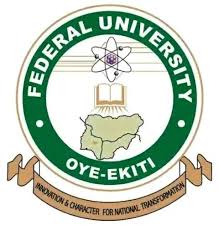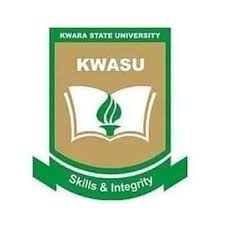WAEC 2022 Economics Past Questions; Interested students who want to sit for WAEC can use this post to practice for their upcoming WAEC examination.
WAEC 2022 CRS Objectives Past Questions
WAEC 2022 English Objectives Past Question
WEST AFRICAN SENIOR SCHOOL CERTIFICATE EXAMINATION (WASSCE) 2022
SUBJECT: ECONOMICS 1 (OBJECTIVE TEST )
TIME ALLOWED: ONE HOUR (1 HR)
INSTRUCTIONS:
- Answer all the questions
- Each question is followed by four options lettered A to D. Find the correct option for each question.
- Give only one answer to each question.
- These questions carries 50 marks
1. Scale of preference shows
A. incomes of consumers in order of size.
B. utilities enjoyed by consumers.
C. opportunity cost of goods consumed.
D. consumers’ wants in order of priority.
2. There is the unemployment of resources when production is
A. within the production possibility curve.
B. outside the production possibility curve.
C. along the production possibility curve.
D. adequate to meet market demand.
3. A major characteristic of natural resources is that they
A. are unlimited in supply.
B. have a high cost of production.
C. are free gifts of nature.
D. do not command any price.
4. A major disadvantage of a capitalist economy is that it
A . lead to low production of goods and services.
B. requires a large number of officials to operate.
C. considers individual consumers’ satisfaction.
D. worsens income inequality among the citizens.
5. The mining sector of an economy contributes 60% to the Gross Domestic Product (GDP). If the GDP is $540, what is the contribution of the mining sector?
A. $90.00
B. $180.00
C. $324.00
D. $350.00
6. The increase in the demand for a commodity may lead to a decrease in the demand for another if both are
A. in complementary demand.
B. of the same quality.
C. in composite demand.
D. in competitive demand.
7. The demand curve for goods of ostentation is usually
A. negatively sloped.
B. positively sloped.
C. vertical.
D. horizontal.
8. Which of the following factors is not a cause of change in demand? Changes in
A. taste and fashion.
B. income distribution.
C. price of the commodity.
D. the size of the population.
9. If the quantity demanded of commodity increases from 20 units to 30 units when there is an increase in price from $4.00 to $5.00, the elasticity of demand is
A. 0.50.
B. 0.65.
C. 2.00.
D. 2.50.
10. The supply curve of a locally-produced good may shift to the right if
A. there is an increase in taxes on inputs.
B. government increases subsidies.
C. rural-urban migration is encouraged.
D. the price of the commodity increases.
11. In a perfectly elastic supply, the supply curve
A. is vertical.
B. is horizontal.
C. slopes upward.
D. slopes downward.
12. An increase in the price of commodity X led to a fall in the supply of commodity Y. Commodities X and Y are
A. competitive goods.
B. composite goods.
C. jointly supplied.
D. derived goods.
13. The production of rice and yam on the same farmland is an example of
A. joint supply.
B. composite supply.
C. competitive supply.
D. market supply.
14. A consumer of a single commodity is in equilibrium when
A. he can equate his demand with a price.
B. he equates marginal utility and price.
C. he can equate his marginal and total utilities.
D. his marginal utility is equal to zero.
15. If the government imposes a minimum price on a commodity
A. market surplus occurs.
B. the market will be cleared in the short-run.
C. excess demand occurs.
D. government regulation is no longer needed.
16. A minimum price legislation is also called
A. price ceiling.
B. price floor.
C. price control.
D. price mechanism.
17. Which of the following factors is not a cause of diminishing returns?
A. Increase in variable inputs
B. Land fragmentation
C. Constant technology
D. Technological innovations
18. In manufacturing, division of labor may be hindered by
A. excessive demand for the product.
B. low level of technology.
C. excess supply of labor.
D. increase in the export of goods.
19. The production cost that varies inversely with output is the
A. total fixed cost.
B. marginal cost.
C. average fixed cost.
D. average cost.
20. A firm that closes down will still incur
A. variable cost.
B. fixed cost.
C. total cost.
D. marginal cost.
21. The sufficient condition for a firm to be in equilibrium is that the
A. firm must show that it is profitable.
B. marginal cost must be equal to average revenue.
C. marginal revenue curve is above the average revenue curve.
D. marginal cost curve cuts the marginal revenue curve from below.
22. Cooperative societies are formed mainly to
A. assist producers to maximize their profits.
B. encourage thrift and credit among members.
C. promote and maintain the welfare of members.
D. break the monopolies of private companies.
23. A disadvantage of a joint-stock company is
A. unlimited liability.
B. limited liability.
C. lack of continuity when a shareholder dies.
D. limited control in management by shareholders.
24. The middleman is responsible for
A. providing research facilities.
B. purchasing raw materials.
C. designing the product.
D. breaking the bulk.
25. A major function of the retailer is to
A. grant credit to the wholesaler.
B. break bulk and sell products in small units.
C. reduce the cost of distribution.
D. generate demand for products through advertisement.
26. A positive effect of a rapid population increase is
A. an excessive budget deficit.
B. a reduction I n standard of living.
C. a wider market for goods and services.
D. a higher dependency ratio.
27. Which of the following factors may not affect the efficiency of labour?
A. Education and training
B. Provision of welfare service
C. Race and color of the workforce
D. Quality of other factor inputs.
28. The type of unemployment found among workers who leave their jobs in search of other jobs in termed
A. seasonal unemployment.
B. structural unemployment.
C. frictional unemployment.
D. cyclical unemployment.
29. The main objective of marketing boards is to
A. accumulate revenue for the government.
B. educate farmers on the pricing of cash crops.
C. stabilize the incomes of cash crop farmers.
D. provide warehousing facilities.
30. The use of mass advertising media will enable a firm to enjoy
A. managerial economies.
B. financial economies.
C. marketing economies.
D. welfare economies.
31. Which of the following industries will add more value to primary products?
A. Service industry.
B. Construction industry.
C. Mining industry.
D. Processing industry.
32. Gross National Product (GNP) less the provision for the wear and tear of assets is the
A. net present value.
B. net national product.
C. net factor income.
D. net indirect taxes.
33. An example of transfer payments in national income accounting is
A. money transferred to another country.
B. unemployment allowance paid to the citizens.
C. the amount paid to a worker on transfer.
D. transfer of funds from one bank to another.
34. Increasing national income without effective control of population size in a country can lead to
A. higher per capita income.
B. increase in poverty.
C. increased outflow of aid.
D. underutilization of resources.
35. An example of commodity money is
A. currency note.
B. mobile money.
C. cheques.
D. silver.
36. If inflation is anticipated, people may
A. save more money.
B. spend more money.
C. give out more loans.
D. spend less money.
37. If the Central Bank increases its bank rate
A. many banks will shut down their operations.
B. customers will borrow more from banks.
C. the supply of money may be reduced.
D. interest charges by banks will fall.
38. Commercial banks are different from development banks in that the latter
A. lend on a short-term basis.
B. pay interest on current accounts only.
C. are mostly joint-stock companies.
D. do not deal in foreign currencies.
39. The use of the bank rate, cash ratio, and open market operations constitute
A. fiscal policy.
B. monetary policy.
C. import policy.
D. export policy.
40. Fiscal policy measures imply a change in
A. only taxation to control aggregate demand.
B. bank rates to influence lending.
C. only government expenditure to regulate an economy.
D. government revenue and expenditure to regulate an economy.
41. If demand is perfectly inelastic, a tax imposed
A. is borne only by the producer
B. is borne only by the consumer.
C. will have greater impact on the seller.
D. will have no impact on the buyer.
42. Development planning focuses mainly on
A. allocation of resources by the entrepreneurs.
B. mapping out strategies by the government.
C. developing some areas of the country by the government.
D. deciding on which types of hoes to build.
43. Political instability hinders economic growth because it
A. scares many people from politics.
B. prevents politicians from playing effective politics.
C. discourages entrepreneurs generally.
D. encourages urban-rural migration.
44. Foreign investment and long term securities in the blance of payments accounts are recorded as
A. current account transaction.
B. capital account transaction.
C. balance of trade account transaction.
D. invisible balance account transaction.
45. An argument for the use of commercial policy rest on the need to
A. make imported goods affordable.
B. reduce domestic unemployment.
C. encourage the importation of non-essential.
D. make a country enjoy absolute advantage in production of all goods.
46. Which of the following measures can lead to an increase in exports?
A. Increase in export duties
B. Increase in excise duties
C. Depreciation of currency
D. Total ban on imports
47. Given that a country’s index of export price is 180 and that of import is 200, the terms of trade is
A. 0.09.
B. 2.00.
C. 90.00.
D. 380.00.
48. A benefit that is present in all forms of economic integration is that
A. factors of production are free to move and be moved.
B. common currency is in use.
C. common agricultural policy is in place.
D. the size of the market is widened.
49. The main function of the African Development Bank (AfDB)is to
A. promote free trade and development among members.
B. provide loans to finance balance of payments problems.
C. provide loans to members to finance viable projects.
D. help members overcome their internal problems.
50. If petrol is no longer needed to produce energy, then demand crude oil
A. will increase.
B. will remain constant.
C. may be limited to chemical industries. D. will make producing countries richer.
Thanks for reading WAEC 2022 Economics Past Questions








